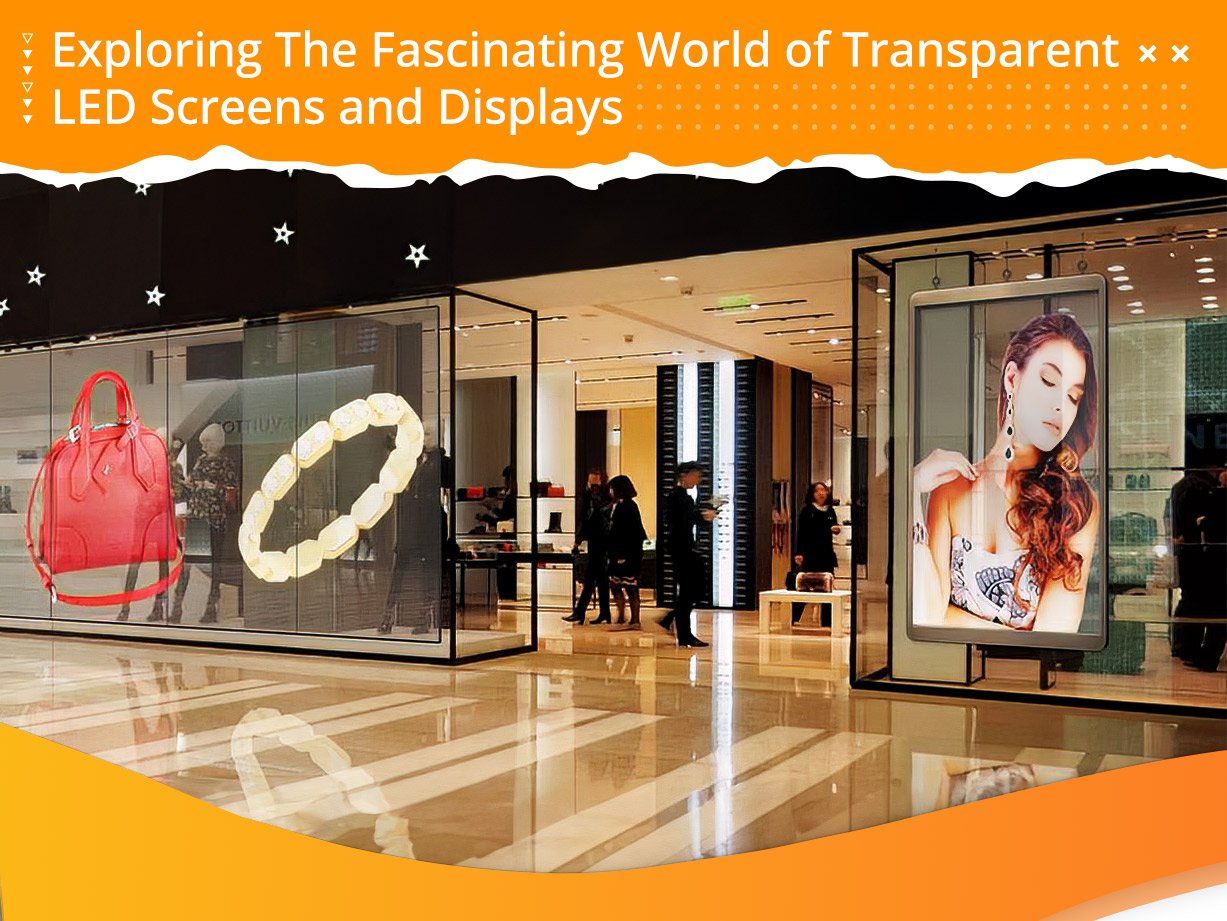In the ever-evolving landscape of visual technology, transparent LED screens and displays have emerged as revolutionary solutions that seamlessly blend with their surroundings while captivating audiences with stunning visuals. These transparent displays have transformed the traditional notions of signage and digital displays, offering endless possibilities for businesses, architects, and creative minds alike. In this blog, we will delve into the fascinating world of transparent LED screens and displays, exploring their technology, applications, advantages, and future potential.
Understanding Transparent LED Screens
Transparent LED screens, also known as see-through LED screens, are cutting-edge displays that enable viewers to see the content displayed on the screen while allowing light to pass through. This unique characteristic makes them suitable for a wide range of applications, where maintaining transparency and aesthetics is essential. These screens are typically composed of a grid of tiny LED pixels, sandwiched between transparent materials such as glass or acrylic.
The Technology Behind Transparent LED Displays
a. LED Pixel Architecture:
Transparent LED screens consist of individual LED pixels that are arranged in a grid pattern. The pixels are transparent, allowing light to pass through when they are not emitting any color.
b. Transparent Substrate:
The LED pixels are mounted on transparent substrates, such as glass or acrylic, which maintain the screen’s see-through property.
c. Image Processing:
Transparent LED displays require advanced image processing technology to manage the transparency while displaying content with optimal brightness and clarity.
d. Connectivity and Control:
Transparent LED displays are controlled through specialized control systems that enable seamless integration with content management and multimedia players.
Applications of Transparent LED Screens
a. Retail and Advertising:
Transparent LED screens offer an innovative way for retailers to showcase products and promotions while still allowing customers to see the store’s interior or the outside environment.
b. Building Façades and Architecture:
Architects and urban planners use transparent LED displays to transform building façades into eye-catching digital canvases, displaying art, information, or interactive elements.
c. Museums and Exhibitions:
Transparent LED screens add a modern touch to museums and exhibitions, providing dynamic displays without obstructing artifacts or exhibits.
d. Sports Arenas and Concert Halls:
Transparent LED displays enhance the spectator experience by providing live game statistics, instant replays, and immersive visuals without blocking the view.
e. Transportation and Public Spaces:
Transparent LED displays in transportation hubs and public spaces serve as information kiosks, wayfinding tools, and engaging advertising platforms.
f. Augmented Reality (AR):
Transparent LED screens can be combined with AR technology to create mind-blowing experiences that blend virtual elements with the real world.
Advantages of Transparent LED Displays
a. Aesthetics: Transparent LED displays blend seamlessly with their surroundings, making them ideal for applications where visual aesthetics are crucial.
b. Natural Light and Visibility:
These displays maintain visibility and allow natural light to pass through, avoiding the need for artificial lighting in certain scenarios.
c. Customizability: Transparent LED displays can be tailored to various shapes and sizes, adapting to specific installation requirements and design concepts.
d. Energy Efficiency:
The transparency of these displays reduces the need for high power consumption, making them relatively energy-efficient compared to conventional displays.
e. Brand Engagement:
Transparent LED displays create a unique and memorable brand experience that can leave a lasting impression on customers and passersby.
f. Indoor and Outdoor Use:
Transparent LED displays are versatile and can be installed both indoors and outdoors, depending on the application.
Challenges and Limitations
a. Transparency and Image Quality:
Balancing transparency with image quality and brightness can be a technical challenge, especially in environments with varying lighting conditions.
b. Cost:
Transparent LED displays tend to be more expensive than traditional screens, which may limit their adoption in some budget-sensitive projects.
c. Maintenance:
Cleaning and maintaining transparent LED screens, particularly those installed in outdoor environments, require careful attention due to their exposed nature.
Future Developments and Potential
As technology continues to advance, transparent LED displays hold immense potential for further innovation and adoption. Some areas of development include:
a. Higher Resolution: Advancements in LED technology may lead to higher pixel density and enhanced image quality.
b. Improved Transparency: Engineers are constantly exploring ways to increase the transparency of these displays while maintaining optimal image performance.
c. Interactive Capabilities: Integrating touch and gesture-based interactivity could open up new possibilities for engaging user experiences.
d. Flexible and Bendable Displays: Research is underway to create transparent LED displays that can be bent or molded, enabling curved installations and unconventional shapes.
Conclusion
Transparent LED screens and displays have revolutionized the world of visual communication, offering a perfect blend of technology and aesthetics. From retail to architectural marvels, these displays have transformed the way we interact with our environment. As technology continues to progress, the potential for innovative applications and enhanced performance of transparent LED displays is limitless. Embracing transparency in digital displays has become a symbol of progressive thinking, creativity, and a harmonious integration of technology with our surroundings. As businesses, artists, and visionaries embrace this transformative technology, the future of transparent LED displays shines brightly on the horizon.

